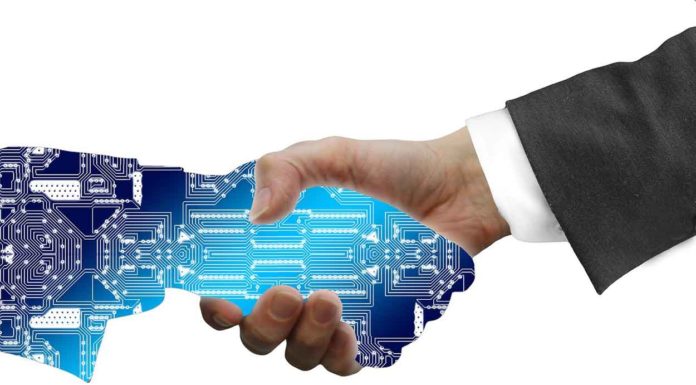The history of the Internet of things (IoT) can be dated as far back as 1990, when John Romkey, a software engineer and evangelist of the Internet performed an act of magic by using a computer to turn on a toaster; the invention, however, wasn't fully automated as someone still had to drop the bread into the toaster. Currently, statistics show that only 1% of the things human interact with is connected to the Internet, now imagine a world in which close to 100% of things we interact with will be connected to the Internet.
The Internet of things therefore simply implies a world in which devices are interconnected i.e a network of devices connected over the Internet interacting with each other, enabling them to acquire and share data without requiring human-to-human or human-to-computer interactions. These interactions are referred to as machine-to-machine interactions. For these devices to be able to acquire and share data they require specific sensors, these sensors could be active in form of heat sensors, light sensors, proximity sensors, image sensors and many more depending on the particular application.
The Internet of things no doubt has significantly influenced the way we live our lives, the way houses are built, the way healthcare is administered, the industrial and business sectors. Here we would be breaking down the influence of the IoT into several sectors of human lives and giving details on several applications that can be found under each section.
In healthcare; the significance of the IoT cannot be overemphasized as it has led to better healthcare delivery. A typical example is seen in with the introduction of pace checkers, people with heart conditions regularly need their heart rate tracked and monitored, with the introduction of the Internet of Things in healthcare this is achieved easily from the comfort from the patients home, a device that measures blood pressure can be implanted easily into the body, this device keeps record of a person's blood pressure and ensures that it does not go above a critical level, providing warning alarms if it senses danger and if it does go above critical level the device instantly alerts the physician assigned. The cause of the problem can be remotely diagnosed and then fixed without the need for the physician to be physically present.
Another application of IoTs in healthcare is the introduction of sensors placed under the pillows of patients, these sensors are able to monitor the vital signs of patients. Statistics collected by Allure network- EarlySense shows a 45% reduction in patients, a 60% reduction in bedsores and 80% reduction in code blue events.
In business and finance; in this sectors of human lives, the role of the Internet of things is fast becoming irreplaceable. Revenue growth of 28.5% has been recorded by manufacturing companies which engage in the use of connected devices on-site, it is also estimated by 2025 the IoT will rise to will boost in economic value by about $11 trillion. With the introduction of the IoT comes a lot of transparency is achieved as organisations are able to able to access data of clients in real-time, a typical example is seen in the auto insurance industry, where with a series of devices and algorithms combined with machine learning, the drivers driving pattern can be studied and recorded and through this assessment auto insurance companies are able to adjust the insurance pricing.
In banking, the IoT gives client real-time information on how the queue in a bank or at the atm is at any particular time or even help with the location of the closest ATM. Banks and business organisations can also use the IoT to access real-time data on their various clients' needs, interests and help businesses attend to the client the way the client will like.
Personal Life; Artificial Intelligence is fast growing and a majority is seen been applied in homes and daily life. IoT has greatly affected the way we go about our daily lives. The way we stream music, buy products and many more can be carried out by simple voice recognition software, typical examples of this are seen in AI like Siri from Apple and Alexa from Amazon. From smart homes consisting of smart TVs, thermostats, door locks. Smartwatches are now able to keep record individuals personal health, set alarms and reminders for various tasks.
Another way the IoT has greatly influenced our daily lives is seen in connected vehicles, using simple proximity sensors; ie giving you the distance between you and the next vehicle and also other incredible features like real-time traffic feed; which also includes providing options on the best route to follow to beat the traffic.
Agriculture; With the introduction of IoT the Agricultural sector is definitely not left out. IoT has made smart farming and smart agriculture possible. Long gone are the days in which horses were required to plough fields. It is predicted that installed agricultural IoT devices by 2020 will be 75 million, this prediction is made by BI Intelligence.
IoT in Agriculture will enable the collection of data easier and with more precision with aid of smart sensors which will be able to predict the weather conditions, cattle and crops health, these data can also be used to measure staffs performance and efficiency of available. IoT in agriculture will also aid in management and assessment of risk by increasing the potential of the harvest being sold. This can be achieved when the farmer knows exactly the quantity of harvest to expect and can, therefore, prepare on how to effectively distribute them.
A major concern however to the Internet of Things, however, is cybersecurity, as unlimited data pertaining to individuals personal life, health, business and finance. The security of large corporations is at stake, as a single breach can lead to the collapse of the entire organization. It is however clearly visible that the IoT has come to stay.







